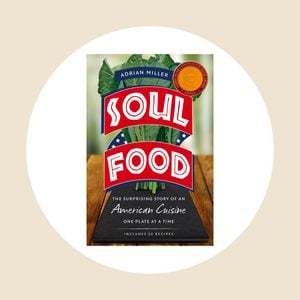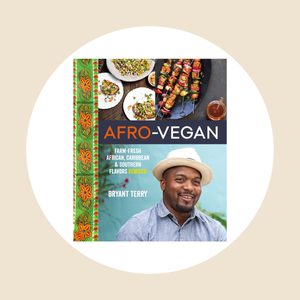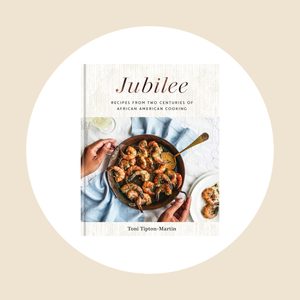What Is Soul Food? The Story You Need to Know
Updated: Jul. 03, 2024

We all eat, but some foods do more than stave off hunger. Charla L. Draper, founder of National Soul Food Month, examines soul food's place at the table.
As a child, I ate many a meal with my grandmothers, who were no slouches in the kitchen. I remember the turnip greens served with cornbread cooked by Mommy’s mother, and the gumbo and fried rabbit from Dad’s mom, Big Mama. Little did I know these dishes would become fixed food memories and my introduction, as a shorty, to soul foods.
What Is Soul Food?
You hear a lot about soul food during Black History Month and on Juneteenth, but this cuisine has dishes on the table year round. During the growing season, the fruits and vegetables will leave you with flavor and taste memories you won’t soon forget.
Soul food grew from the ingenuity and mother wit of enslaved peoples transported from Africa. With their arrival in an unfamiliar New World, these folks were able to create mouthwatering dishes blending what they remembered of the foods of their homeland with locally available ingredients and European “recipes” they were taught to make, creating the cuisine we know today as soul food.
The most highly favored dishes in this cuisine are fried chicken, cornbread, macaroni and cheese, ham, pork chops, barbecue, butter beans and hibiscus tea. Dr. Jessica B. Harris, culinary historian and author of the tome that inspired the Netflix series High on the Hog, recalled, “At home we didn’t call it soul food, we just called it dinner.”
Where did the term “soul food” come from?
While the cuisine itself has been around for centuries, the term “soul” didn’t pick up steam until the late 1940s. At first it wasn’t related to food; it was about music. African American jazz musicians were regularly being passed up for their white counterparts for the biggest, best-paying gigs, and they were fed up. After all, they’d invented the genre.
In an interview with Epicurious, food historian Adrian Miller explained the Black artists’ solution. They decided to infuse something into their music that white musicians never could: “the sound of the Black church in the rural South,” which they called “soul” or “funky.” Soon, the word was used to label many parts of Black culture, from soul music to soul brothers and sisters to soul food.
Learn more about the Black chefs who have changed the way we eat.
What’s the difference between soul food and southern food?
Soul foods are southern foods, but southern foods are not necessarily soul foods. Soul foods are made from the southern foods that were plentiful in the states that became home to Africans and eventually African Americans.
Food is intrinsic in culture, and soul food conveys memories of lived experiences, communal meals, celebrations, comfort, joy, sustenance and nutrition. Each of these is an element of soul food.
Soul food has acquired a higher profile in recent years. The foods that African Americans were weaned on—greens, okra, yams, black-eyed peas and more—were at one time found only in community grocery stores and home gardens. Today, you’ll find them in food halls, restaurants, farmers markets, food trucks, organic food outlets and grocery stores. Produce aisles are bursting with the colors, shapes and scents of these foodstuffs that may be exotic to some, yet common to many.
Is soul food good for you?
It certainly can be. Let’s start with leafy green vegetables, such as collards, dandelion, kale, mustard, spinach and turnip greens, all of which deliver vitamins A, C, E and K. Sweet potatoes come in a range of colors from orange to yellow, red and purple. The nutrient-packed tubers are a good source of vitamins A and C, plus potassium and fiber. Beans and legumes are popular choices because they provide plant-based protein, B vitamins, fiber and other nutrients. And ancient grains, such as sorghum and millet, are nutrient-rich and gluten-free options.
When you look at its African roots, much of the food is plant-based and that makes soul food appealing to people in search of vegan riffs on traditional meat-flavored dishes. Don’t forget to try these vegan soul food recipes.
The Soul Food I Can’t Live Without
My top five favorite dishes in this cuisine are sweet potatoes, butter beans, hot cornbread, macaroni and cheese, and peach cobbler. I have a few others, but five means five!
As you take a seat at the table and pass your plate, keep in mind these foods reflect the rich cultural heritage of African American cooks whose skill and abilities with foodstuffs enabled them to create dishes that would influence American cuisine for hundreds of years to come. If you can’t live without it, then you must try these soul food restaurants.
How to Learn More About Soul Food
You can find a more detailed backstory on soul food using the resources below.
- Soul Food: The Surprising Story of American Cuisine, One Plate at a Time, by Adrian Miller
- Black Smoke: African Americans and the United States of Barbecue, by Adrian Miller
- The Cooking Gene, by Michael Twitty
- High on the Hog, by Dr. Jessica Harris
I’m also sharing some cookbooks by Black authors to help you experience soul food at home.
- Afro-Vegan, by Bryant Terry
- Black Food, by Bryant Terry
- Jubilee: Recipes from Two Centuries of African American Cooking, by Toni Tipton-Martin
I highly recommend the Netflix docuseries High on the Hog. African/American: Making the Nation’s Table, an exhibition currently at The Museum of Food and Drink in New York, is well worth the trip, as is The National Museum of African American History & Culture in Washington, D.C.



























